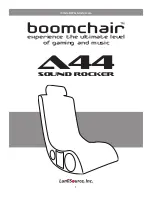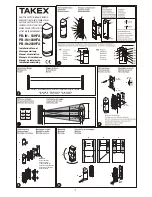
Wavez Kymera User’s Manual v
1.7.20181211
Page 18
3.
At low speed, your weight should be shifted further towards the tail and will require more steering with feet or hands.
4.
Having your weight further back will also lift the nose in choppy water, prevent submersion and improve steering.
5.
As the board picks up speed, you should shift your weight forward proportionate to speed. At full power, your best position is typically
with your chest all the way to or near the front hatch. This will assist with helping the board to plane, minimise the amount of hull below
the water and maximise speed.
6.
Slow down or stop by releasing the throttle trigger. The board will stop planing, dropping into the water. The water resistance will make
the board stop quickly.
7.
When slowing down, do so progressively and shift your weight backwards, by straightening your arms, to avoid the nose diving and water
coming over the bow. The less water in the board, the easier the cleaning afterwards.
8.
Keep in mind the board will react differently depending on how the riders weight is shifted both from side to side and front to back. Also
shifting more weight on a knee will cause a different effect than just moving your body weight.
9.
Kymeras respond best when weight is shifted left and right towards the rear of the board. Moving your upper body weight can
destabilise the board and cause the nose to dive, but pushing your shoulders up and pushing your weight back when you turn can be
highly effective.
Riding quickly becomes intuitive, and soon it will feel as though simply thinking to head in a specific direction will cause the desired reaction.
This symbiotic system provides a much more engaging experience as you hone your skills and develop your own style of riding.
Want to turn right using your hand as a water brake? Reach across the board with your left hand to take hold of the throttle and then
your right hand is free to use. This also shifts your body weight to the right side, further improving your turn.
When riding always us
e the 2/3rd’s rule: never using more than 1/3rd battery on the way out, leaving 2/3rd’s for the ride back. Changing
wind and current conditions can require more battery on the way back. Pay particular attention to changing conditions and turn back
immediately if conditions begin to deteriorate.
Your Kymera’s
battery meter (located inside the ebox under the front hatch) displays the battery % remaining. The Kymera will typically switch
to reserve at around 20% remaining.
Take care when accessing the front hatch to prevent water entry
When the battery is depleted, emergency reserve power will activate dropping the Kymera to a speed of 8-10kph for 5-10 minutes.
Reserve mode should be used only in emergency situations and not counted in your 2/3
rd
’s rid
ing plan. You should aim to be back to
shore just as your battery enters reserve mode.
Carry a reliable means of communication to shore with you at all times for use in case of emergency
Pay attention to the amount of water in the board. Particularly when ridden by a beginner, or in choppy water, the board may take on a bit of
water. Check from time to time and ensure that you do not ride the board for extended periods of time with a lot of water in the board.
Although everything in the board interior is water resistant, the components are not intended to be operated when submerged, and it can
increase the likelihood that components like the motor or drive shaft bearing require professional servicing earlier than they otherwise would.
If it builds up, return to shore, remove the battery and drain water from the board.
Emergency Turning and Stopping
Sometimes, you need to turn or stop FAST! This could be due to you seeing some debris in the water you’d rather not hit, or
a swimmer
emerging from the water in the middle of a watercraft area!











































